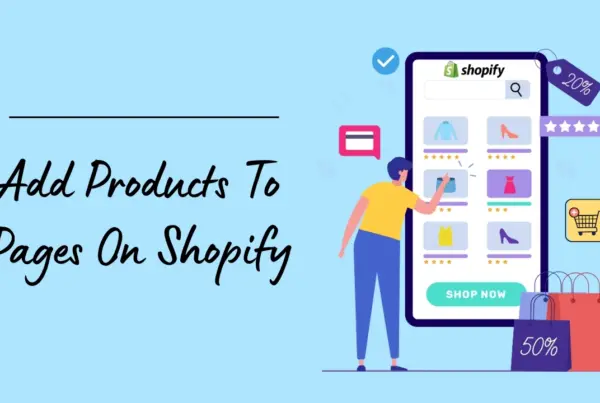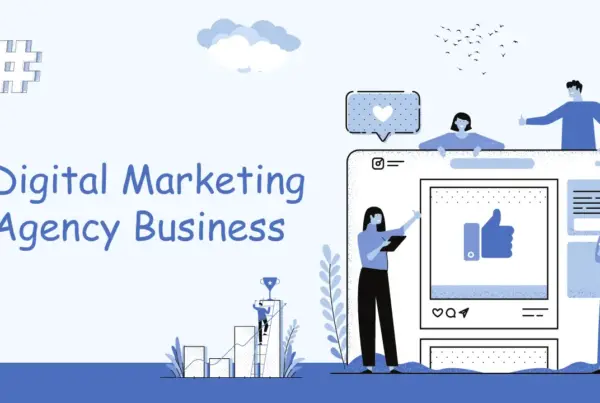An app development business is an exciting venture with vast opportunities in today’s digital landscape. With billions of smartphone users worldwide and the continuous growth of mobile technology, the demand for innovative and useful apps is ever-expanding.
Whether you’re a seasoned developer or an aspiring entrepreneur, diving into the world of app development requires careful planning and execution.
A Statistical Overview: Why Start App Development Business?
Let’s say you are an entrepreneur or a developer and thinking of so many negative questions due to the modern technological revolution. In that case, instead of giving you an easy reply (yes/no), let me walk you through some statistics that will draw a tangible sketch.
According to a study by Statista, the global app market is estimated to reach a total revenue of $522.67 billion in 2024. The total revenue is projected to appear at a CAGR of 8.83% (2022-2027), resulting in a market size of $673.80 billion by 2027.
Another report by Statista declared IAP (in-app purchase) revenue in the app market is estimated to extend $172.50 billion, Advertising revenue to set foot on $344.10 billion, and Paid app revenue to gain $06.09 billion in 2024.
Yet, another statistic by Statista announced the average revenue per download in 2022 was $1.79, which is expected to increase further in the next year.
Where millions of apps are obtainable, and billions are downloaded, this statistic makes it clear that there is a huge demand in the app development business.
Definition of App Development
So, what exactly is app development, and why is this business in great demand?
App development is an operation of making software applications specifically designed to run on mobile devices such as smartphones, tablets, and wearables. Developers use programming languages, frameworks, and tools to produce apps for diverse platforms like Android, iOS, and the web.
It involves various stages, including creativity, design, development, testing, and deployment. App development can range from building simple utility apps to complex, feature-rich applications tailored to specific user needs and preferences.
The goal of app development is to provide users with intuitive, functional, and engaging experiences that solve problems, entertain, or enhance productivity.
How To Start An App Development Business
Starting an app business requires a blend of business acumen, technical know-how, and creativity. By following these steps and staying agile in your approach, you can build a successful app business and make a meaningful impact in the digital world.
Define the App Idea
To build an app, what do you think you need at first? Let’s start by walking with the most vital step: defining an app idea.
- Begin by distinguishing an issue or a necessity in the market that your app can address.
- Research other apps in the same niche to see what is successful and what is not.
- Brainstorm unique features or functionalities that can differentiate your app.
- Validate your app idea by conducting surveys, market research, and getting feedback from potential users or target audiences.
- Adapt your concept to the feedback you get and ensure there’s a viable market for your app.
Choose Native or PWA (Progressive Web App)
Let’s now reflect on your method toward app development with two significant aspects Native or PWA (Progressive Web App). However, each has advantages and limitations, so carefully opt for the right one for your needs.
You can choose any one of these after determining your specifications.
Native App: Customized to work with particular hardware and operating systems (e.g., iOS and Android). Delivers exceptional performance.
Progressive Web App (PWA): Functions online but has native app behavior. Eschews the publication process in the app store.
Working:
- Think of your app nature and your target audience when deciding between native and PWA.
- Better performance, more accessible access to device functionality, and a more flawless user experience are all provided by native apps.
- PWAs are web-based apps that work across different platforms and devices, offering easier maintenance and deployment.
- Analyze the benefits and drawbacks of each strategy in light of variables such as development cost, time-to-market, user experience, and scalability.
Development Methods
Selecting your development method comes next after deciding on the type of program. So, decide carefully how you’ll build your app: in-house development team, outsourcing, or using freelancers.
Develop Yourself: Are you eager to code as you are tech savvy? You can start building from scratch when making an app, but be ready for a steep learning curve.
Hire an Agency or Freelancer: Think about how much it would cost to hire experts like Core Devs. The most costly but most customizable choice is this one.
Use an App Builder: These tools don’t require coding. They save time and money by offering a quality app without complexity.
- Choose the technology stack based on your chosen platform (iOS, Android, or both).
- Consider using cross-platform development frameworks like React Native or Flutter to develop for multiple platforms simultaneously.
- Follow Agile or another iterative development approach to guarantee adaptation and flexibility all along the way.
Build App with App Builders
App builders can be an ample choice for rapid prototyping or building simple apps with basic functionalities. Assume you decide to use an app builder. How do you move forward from here?
Here’s how you do it:
- Consider features, affordability, scalability, customization choices, and simplicity of use when comparing various app builders.
- AppSheet, BuildFire, and Appy Pie are a few well-known app builders.
- Remember that app builders have limits, particularly with regard to customization and scalability for more intricate programs.
- Make design, navigation, and style decisions for the app while keeping your brand in mind.
- Add all of the material for your app, including events, articles, videos, pictures, and more.
- Add more functionality to improve your app based on what you require.
- If necessary, add more customizations to your app (Custom Plugins).
- To add sophisticated functionality, use APIs.
Testing the App (iOS and Android Devices)
Testing is paramount to secure your app operates correctly and meets user expectations, specifically before publishing your app to the globe. What are the pivotal aspects to check?
I use the following list to help me decide what to look for when taking a test:
- Execute operational testing to verify all attributes work as intended.
- Perform usability testing to evaluate the app’s user interface and user experience.
- Test the app on OS versions and a variety of devices to guarantee compatibility.
- Use emulators/simulators for initial testing and real devices for comprehensive testing.
- Utilize beta testing platforms like TestFlight (iOS) and Google Play Console (Android) to gather feedback from real users before the official launch.
Submission and Publishing
Your app is now prepared. So, what is the process for submitting it to the app stores?
What you should do is as follows:
- Open developer accounts on the Google Play and Apple app stores.
- According to store guidelines, prepare app assets (app icon, screenshots, description, etc.).
- Follow the submission guidelines and review processes for each store.
- Set pricing and distribution options based on your monetization strategy.
- Examine app ratings and reviews, and reply to user comments promptly to improve the app’s visibility and user satisfaction.
Nonstop Development and Updates
The job doesn’t end when your app is launched. How can you assure that your apps are still exciting and relevant?
What steps can you take to keep your app fresh?
- Gather user feedback through app analytics, reviews, and surveys.
- Give priority to performance improvements, problem repairs, and feature enhancements depending on industry trends and user feedback.
- Publish regular updates to address issues, introduce new features, and maintain your market competitiveness.
- Utilize app analytics tools (e.g., Firebase Analytics, Google Analytics) to track user engagement, and retention, and make data-driven choices for ongoing development.
By following these comprehensive steps, you can effectively start an app development business, create successful apps, and continuously improve and update them to meet user needs and stay competitive in the market.
Types of App Development
In today’s digital age, the world of app development presents a library of possibilities for individuals and businesses alike. From catering to specific platform preferences to targeting niche audiences, the realm of app development encompasses various types to suit diverse needs.
In this segment, we’ll delve into diverse types of app development, exploring their features, advantages, and use cases.
1. Android App Development
Android app development revolves around creating applications specifically tailored for the Android operating system. With the widespread adoption of Android devices globally, including smartphones, tablets, and smart TVs, targeting this platform offers immense potential for reaching a vast audience.
Android Studio is known as the official IDE (Integrated Development Environment) for Android app development. And developers usually use it in conjunction with the programming languages Java or Kotlin. However, the primary source is the Google Play Store. It also offers developers a platform to exhibit their productions to billions of users.
2. iOS App Development
The primary goal of iOS app development is to create an Apple ecosystem, including Apple Watches, iPads, and iPhones. Basically, developing for iOS requires proficiency in programming languages like Objective-C or Swift and Apple’s Xcode development tools.
While the iOS user base may be comparatively smaller than Android, it often represents a lucrative market segment with high user engagement and spending power. Apps for iOS are distributed exclusively through the Apple App Store, providing developers with a curated platform for showcasing their creations to discerning users.
3. Niche-specific App Development
Niche-specific app development entails creating applications targeted towards specific industries, interests, or user demographics. These apps cater to specialized needs or address particular pain points within a niche market segment.
Examples include healthcare apps for managing chronic conditions, fitness apps for tracking workouts, or language-learning apps for acquiring new skills. Developers can tailor their apps to deliver highly relevant and personalized experiences by focusing on a niche audience. Thereby it attracts loyal users and drives engagement.
4. No-code DIY White-label App Development
No-code DIY white-label app development empowers individuals and businesses to create custom-branded mobile applications without requiring extensive coding knowledge or technical expertise. These platforms offer intuitive drag-and-drop interfaces, pre-built templates, and modular components that streamline the app development process.
Users can customize app designs, features, and content to represent their distinct needs and brand identity. White-label solutions enable rapid app deployment and scalability, making them ideal for startups, small businesses, and entrepreneurs looking to enter the app market quickly and cost-effectively.
5. Native App Development
Native app development involves creating applications for specific platforms such as iOS, Android, or Windows utilizing programming languages tailored to a particular platform, for example, Java or Kotlin for Android, and Objective-C or Swift for iOS.
These apps are optimized for performance and take full advantage of the device’s capabilities, providing seamless user experiences. Native apps offer superior performance, access to device features, and better security compared to other types of apps.
6. Progressive Web App (PWA) Development
Progressive web apps are web-based applications that offer a web browser experience and feel like a native app. PWAs operate contemporary web technologies like HTML5, CSS, and JavaScript to deliver rapid, dependable, and engaging experiences on all platforms.
They are responsive, installable, and work offline, making them suitable for users with limited connectivity. PWAs eliminate the need for app store distribution and offer seamless updates, making them cost-effective and easy to maintain.
7. Cross-Platform App Development
With cross-platform app development, programmers may create programs with a single codebase that functions across various platforms. Xamarin, Flutter, and React Native are some of the frameworks that let developers create code once and use it across different platforms, saving time and resources.
Cross-platform apps offer faster development cycles, cost-effectiveness, and broader market reach. However, they may face restrictions regarding platform-specific features and performance.
8. Hybrid App Development
Through the combination of online and native app components, hybrid app development enables developers to take advantage of web technologies and access native device functionalities. Developers can create hybrid apps with web technologies (HTML, CSS, JavaScript) and package them as native apps for distribution by using frameworks like Ionic, Cordova, and PhoneGap.
Hybrid apps provide a balance between cost-effectiveness, speed of creation, and feature access. However, they may suffer from performance issues and lack native user experience.
9. Enterprise App Development
Enterprise app development focuses on creating applications that help increase productivity, expedite corporate procedures, and foster better internal communication in enterprises. These apps are made with certain business requirements in mind, such as CRM, ERP, HR management, and workflow automation.
Enterprise apps prioritize security, scalability, and integration with existing systems to ensure seamless operation within the corporate environment.
Final Thought
In conclusion, the app development world offers myriad options, each with its special features and advantages. Whether you’re building a native app for optimal performance, exploring cross-platform solutions for broader reach, or embracing the versatility of PWAs, understanding the different types of app development is essential for success in today’s digital age.
By choosing the right approach based on your project requirements and objectives, you can create impactful apps that please users and promote business expansion.
At last, the demands of customers drive a diverse landscape in the app development industry. Developers can choose from a wide range of possibilities when it comes to focusing on particular businesses, user segments, or platforms.




